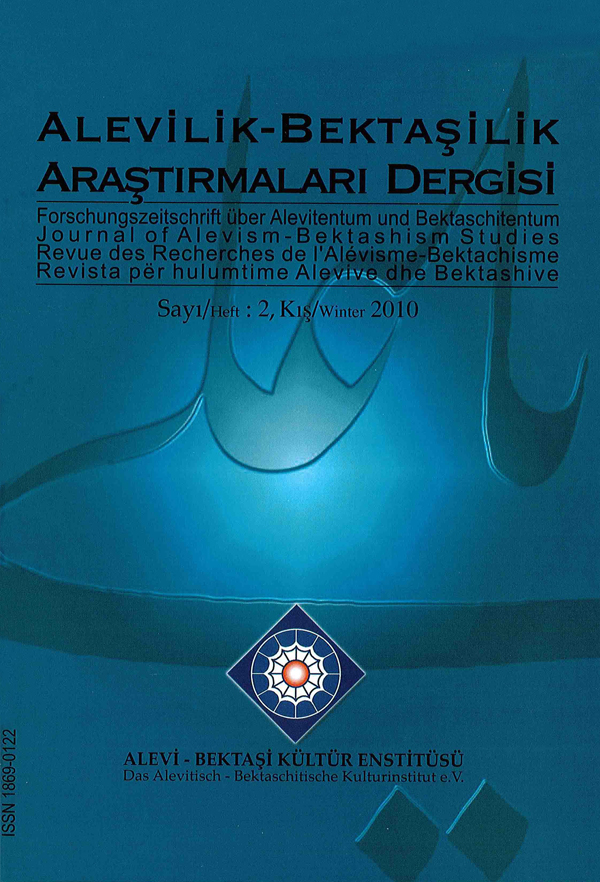Bektaşi Giyim Kuşaminda Kutsal Simgelere Örnekler
DOI:
https://doi.org/10.24082/abked.2010.02.002Anahtar Kelimeler:
anahtar kelimeÖzet
İnsanoğlunun en önemli özelliklerinden biri simgeleştirme yeteneğidir. İletişim kurmasında, sosyalleşmesinde bu yeteneğinin payı büyüktür. Aynı zamanda bilgi birikiminin sağlanması ve gelecek ne- sillere aktarılmasında da simgeleştirme yeteneğini kullanan insan, adına "kültür" dediğimiz zengin bir miras oluşturmuştur. Kultur mirasının icinde, her kültürel kesitte "algı ötesi" olan ve kısaca "aşkın" dediğimiz kendisini aşan alanla, "ickin" dediğimiz, algilayabildiği, yorumlayabildiği bir baska alanın mevcudiyeti söz kosunu olmuştur. Kültürel süreç icinde aşkın alanla temas noktalarında bu alanın bir kısmını içkinleştirse de, aşkın alan sonsuzluğa uzanarak her zaman mevcudiyetini korumuştur. Aşkın alan "kutsal alandır" ve bu alanla temas ulu- orta yapılmaz, kuralları vardır, "tabu" ları vardır. Din, kutsal alana ilişkin bir kavramdır. Insan için "aşkın" olanla ilgilidir. Bu nedenle dinsel alan- da görev yapanlar, ya da dinsel ibadet yapanlar aşkın alanla bazı kurallara uyarak temas deneyimi yaşarlar. Dinsel giyim-kuşam, kutsal alanla temas için oluşturulmuş simgesel özellik taşıyan, özel araçlardır. Bunlara kısaca "libas-ı fahire" denir. Bu makalede Bektaşi Meydanında kullanılan kutsal gi- ysilerden ve takılardan birkaçını ele alarak taşıdığı anlamları seslendirmeye çalıştık. Böylece giyinme kaynaklı kutsal simgelerin kadim kültürl- erden bugüne nasıl bir mesaj iletme gücü olduğunu da göstermeyi amaçladık.
İndirmeler
İndir
Yayınlanmış
Nasıl Atıf Yapılır
Sayı
Bölüm
Lisans
Telif Hakkı (c) 2010 Alevilik-Bektaşilik Araştırmaları Dergisi

Bu çalışma Creative Commons Attribution-NonCommercial-NoDerivatives 4.0 International License ile lisanslanmıştır.








